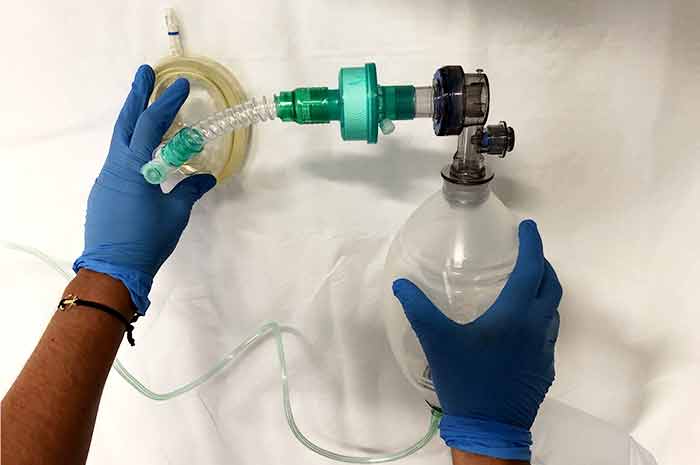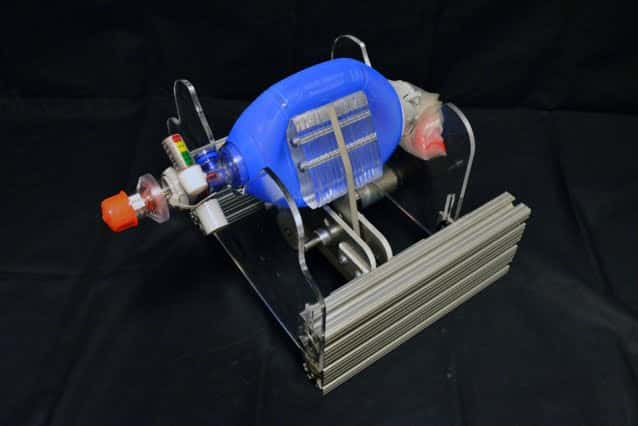One of the most pressing shortages for hospitals during theCovid-19 emergency it's the lack of fans. These machines can keep patients breathing when they can no longer do it themselves, and can cost as much as 30.000 euros each. Now a quickly assembled team of engineers, doctors, computer scientists and other volunteers, centered at MIT, is working to implement a safe and affordable alternative that could be built quickly around the world.
The team, called MIT E-Vent (for emergency ventilator), was formed on March 12 in response to the rapid spread of the coronavirus pandemic. Its members were alarmed by a large conversation that arose over a reference to an MIT project developed in 2010. The students at the time designed a simple ventilation device that could be built with parts worth around 100 euros. They published a paper detailing their design and testing, but the work ended at that point. Now, given the emergency, a new team has taken over that project at a greatly accelerated pace.
The core of the low cost respirator
The key to the simple and economical fan alternative is a hand-operated plastic bag calledAmbu bag“, which hospitals already have on hand in large quantities. It is a balloon made of self-expanding plastic material which can be handled, by a doctor or emergency technician, to deliver breaths to a patient in situations such as cardiac arrest, until a respirator becomes available. It connects at its ends to two one-way valves. A tube is inserted into the patient's airway, and pumping air into the lungs is done by pressing and releasing the flexible bag. This is a task for qualified personnel, trained in how to assess the patient and adjust pumping times and pressure accordingly.

The innovation born from the MIT project in 2010 and now rapidly refined and tested by the new team, was to devise a mechanical system to perform the compression and release of the Ambu bag, since this is not something a person could do for prolonged periods. But it is essential that such a system does not damage the bag and is controllable, so that the amount of air and pressures delivered can be adapted to the individual patient.
The project is open source, but rigor is needed
The device must be very reliable, as an unexpected failure of the device could be fatal, but as designed by the MIT team, the bag can be immediately operated even manually in an emergency.
The team releases the low-cost respirator project completely open source. However, he is keen that potential productions are not made without the necessary clinical knowledge or skills. To be sure of the durability of these devices would require approximately 1 million test cycles over a two-week period. To help reduce the spread of misinformation or poorly thought-out advice, the team has added verified information resources on the clinical use of ventilators and the requirements for training and monitoring in the use of such systems to their website. All this information is available for free at e-vent.mit.edu.
“We are publishing a design guide (clinical, mechanical, electrical/control, testing),” says a team member. “We encourage able clinical engineering teams to work with their local resources, following specifications, and welcome any input other teams may have.”
The team of all volunteers is working without funding and operating anonymously for now because many of them have already been inundated with requests from people. Everyone wants more information, and the team fears they will be overwhelmed by calls that would interfere with the work on the project.
“We would really like to stay focused,” says a team member. “And that's one of the reasons why the website is so essential, so that we can communicate with anyone who wants to read about what we're doing, and also so that others around the world can communicate with us.”
First of all, patient safety
“We established what we call minimum clinical functional requirements,” which is the minimum set of functions that the device should perform to be safe and useful, says one of the team members, an engineer. The determination of the minimum requirements was made by a team of doctors with extensive clinical backgrounds, including anesthesia and critical care. In parallel, the group committed to designing, building and testing an updated prototype.
Initial tests reveal the high loads that actual use entails and some weaknesses that have already been addressed. The team has already fabricated the new versions and others are being prepared for further functional testing. The team says there is enough detailed information on their website to allow other teams to work in parallel with them, and they have also included links to other teams that are working on similar design efforts.
A prototype in just 7 days
In less than a week the team went from empty benches to the first realistic tests of a prototype of the low cost respirator. One team member says that in less than a week they have been working, motivated by reports from doctors already having to ration ventilators and by the intense attention the group brought to this project, and have already generated “multiple theses” on the research.
The interdisciplinary nature of the group was crucial, says one team member. “The most exciting moments are when we have a design engineer sitting next to a controls engineer, sitting next to the manufacturing expert, with an anesthesiologist on WebEx. All documents and spreadsheets in parallel. We're discussing the details of everything from ways to track patient vital sign data to the best sources for small electric motors. “
The intensity of the work, with people putting in very long hours every day, was tiring. But it didn't dampen their enthusiasm.
“We all work together, and ultimately the goal is to help people, because people's lives are understandably in the balance,” one of the researchers said.


